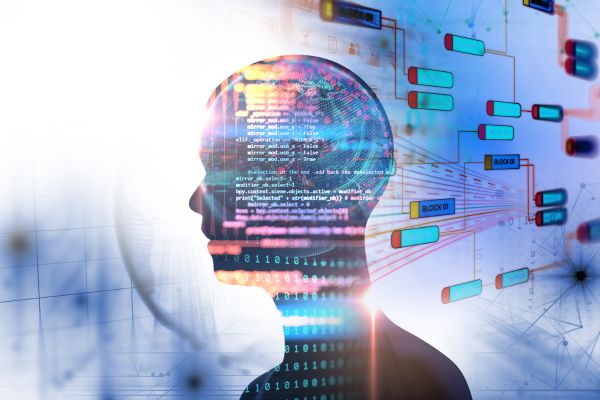Programming is the bedrock of virtually all technological innovations that we use today. It’s what drives our digital world, powering everything from our mobile apps to complex artificial intelligence systems. Yet, understanding programming can feel daunting to those new to the field. This article will guide you through the basic principles of programming, making this essential discipline accessible for anyone interested in learning it.
Understanding Programming
In its simplest form, programming is the process of creating a set of instructions that tell a computer how to perform a task. Everything that happens on a computer, from opening a web browser to playing a video game, is the result of a computer program.
Computer programs are written in languages that have specific rules and syntax, much like human languages. There are many different programming languages, each with their own strengths, weaknesses, and use cases.
Programming is a powerful tool for solving problems. With a strong foundation in programming, you can build software, create websites, develop mobile apps, and much more.
The Importance of Algorithms
An algorithm is a sequence of steps or a set of rules for performing a specific task. Algorithms are crucial in programming because they provide a way to design and structure code to solve a problem.
Algorithms can be simple or complex, and they often involve making decisions, repeating actions, and processing data. A well-written algorithm can make a program run more efficiently and effectively.
Understanding algorithms is essential in programming. By learning how to create effective algorithms, you can write code that is efficient, understandable, and easier to debug.
Data Types and Variables
Data types and variables are fundamental concepts in programming. A variable is like a container that holds a value, while the data type of a variable determines what kind of value it can hold.
Common data types in programming languages include integers (whole numbers), floating-point numbers (numbers with decimal points), characters, and booleans (true or false).
Understanding data types and variables is essential because they form the building blocks of any program. They are used to store and manipulate data, making them vital for problem-solving in programming.
Control Structures: Conditional Statements
Control structures determine the flow of a program. Conditional statements are one type of control structure, allowing a program to perform different actions based on different conditions.
In programming, conditional statements often use comparison operators (like equals, not equals, greater than, and less than) to compare variables and determine which actions to take.
Conditional statements are vital for creating dynamic programs. They allow your program to react to different situations and make decisions, making your program more flexible and powerful.
Control Structures: Looping
Another type of control structure is looping, which allows a program to repeat a section of code multiple times. Common types of loops include for-loops, while-loops, and do-while loops.
Loops are powerful tools in programming. They can save you time and make your code more efficient. For instance, instead of writing the same line of code ten times, you could write a loop that runs that line of code ten times.
Understanding loops is crucial because they allow you to manage and manipulate data in sophisticated ways, enabling you to solve more complex problems.
Functions and Procedures
Functions and procedures are reusable pieces of code that perform a specific task. Functions typically return a value, while procedures perform an action but don’t return a value.
Functions and procedures help to make code more readable and maintainable. Instead of writing the same code multiple times, you can write a function or procedure and call it when needed.
Understanding functions and procedures can make you a more efficient programmer. It allows you to write more concise, readable, and reusable code, leading to more robust and maintainable programs.
Understanding Object-Oriented Programming
Object-oriented programming (OOP) is a programming paradigm that uses objects, which are instances of classes, to design and build software. Classes are like blueprints for creating objects, defining what attributes and behaviors an object should have.
OOP is based on four main principles: encapsulation, inheritance, polymorphism, and abstraction. These principles allow programmers to create software that is more manageable, scalable, and easier to understand and maintain.
Understanding OOP is essential because it’s widely used in many programming languages. It allows you to write code that is more structured, reusable, and easier to debug.
Encapsulation
Encapsulation is a principle of OOP that binds together the data and functions that manipulate the data, and that keeps both safe from outside interference and misuse. The data of an object should be accessed only through the methods of that object.
This concept helps in data hiding as it keeps the data private, which is a way to reduce complexity and increase reusability.
Understanding encapsulation is a fundamental part of learning OOP, as it allows for better control and protection of the data within your programs.
Inheritance
Inheritance is another principle of OOP, allowing one class to inherit the properties and methods of another class. This concept enables code reusability and can be a significant time saver when developing software.
By using inheritance, programmers can create new classes based on existing ones, inheriting their features and behaviors. This leads to a more organized and structured code, promoting clarity and ease of maintenance.
Understanding inheritance is vital because it’s a cornerstone of OOP and plays a significant role in creating flexible and efficient code.
Polymorphism
Polymorphism is an OOP principle that allows one interface to be used for a general class of actions. It means that the same word or symbol can automatically do different things depending on the context.
This characteristic allows for flexibility and ease in integration, making the creation of complex systems more straightforward and less prone to errors.
Understanding polymorphism is crucial because it enables programmers to design more dynamic and versatile systems.
Abstraction
Abstraction is the OOP principle that focuses on the essential features of an object rather than its internal workings. It’s a way of managing complexity by breaking down complex systems into simpler, more manageable parts.
By using abstraction, programmers can hide the complexities and details of how a feature works, focusing instead on what it does. This makes the code easier to read and understand, and it prevents unnecessary details from cluttering the program.
Understanding abstraction is essential because it’s a foundational principle of OOP and a vital tool for managing complexity in software development.
Error Handling
Error handling is a crucial aspect of programming. It refers to the process of responding to and recovering from error conditions in your program. Effective error handling can prevent your program from crashing and can provide more informative error messages to users.
Different programming languages handle errors in different ways, but common strategies include exception handling, return codes, and assertions.
Understanding error handling is essential because it helps ensure the stability and reliability of your programs.
Debugging and Testing
Debugging and testing are critical parts of the programming process. Debugging involves finding and fixing errors in your code, while testing involves checking your code to make sure it works as expected.
There are many different methods and tools for debugging and testing, from simple print statements to complex debugging tools and automated testing frameworks.
Understanding debugging and testing is essential because they help you create reliable, high-quality software. They help you find and fix mistakes, prevent future errors, and ensure your program behaves correctly.
Understanding Syntax and Semantics
In programming, syntax refers to the rules that dictate how programs in a specific programming language must be written. Semantics, on the other hand, refers to the meaning of a program or code.
Programming languages each have their own specific syntax and semantics. A deep understanding of the syntax and semantics of the language you are using is crucial to write correct and efficient programs.
Coding Style and Best Practices
Coding style refers to the set of conventions and rules that you follow when writing code. It covers aspects like indentation, naming conventions, and use of spaces and brackets.
Best practices are proven recommendations that help improve the efficiency and effectiveness of a program. They cover areas such as code organization, error handling, and performance.
Following a consistent coding style and adhering to best practices can make your code easier to read, understand, and maintain. It also helps prevent errors and improves the overall quality of your code.
Version Control Systems
Version control systems are tools that help manage changes to source code over time. They allow you to keep track of every modification to the code, making it easier to fix mistakes, review changes, and collaborate with others.
Understanding how to use version control systems is essential for any programmer. They can save you time and headaches, and they are a crucial tool for team projects.
The Importance of Comments
Comments are lines of text in your code that are ignored by the compiler or interpreter. They are used to explain what different parts of your code do, making it easier for others (and yourself) to understand your code.
Comments can also be used to temporarily disable parts of your code. This can be useful when debugging, as it allows you to isolate different parts of your code to find errors.
Using comments effectively can make your code much easier to understand and maintain. It’s a good practice to write comments for your future self and other developers who may work on your code.
Understanding Libraries and Frameworks
Libraries and frameworks are reusable pieces of code that can help you accomplish tasks more quickly and easily. They can save you from having to write a lot of code from scratch, and they can make your code more reliable and efficient.
Understanding how to use libraries and frameworks is a valuable skill for any programmer. They can help you speed up your development process, and they can make your code more robust and efficient.
The Role of Documentation
Documentation is a written text that accompanies your code, explaining how to use it and how it works. It can include everything from comments in your code to user manuals and API references.
Good documentation can make your code easier to understand and use, both for yourself and for others. It can also save you time and help prevent errors.
Understanding how to write good documentation is an important skill for any programmer. It can improve the readability and maintainability of your code, and it can make it easier for others to use and contribute to your code.
The Path to Continuous Learning
The field of programming is constantly evolving, with new languages, tools, and practices being introduced regularly. To keep up, it’s important to commit to continuous learning.
There are many resources available to help you keep learning, including online courses, tutorials, forums, and books. It’s also a good idea to work on projects that challenge you and to contribute to open source projects.
Continuous learning is essential for success in programming. It allows you to keep up with the latest developments and to continually improve your skills and knowledge.
Conclusion
Understanding the basic principles of programming is a crucial first step in becoming a proficient programmer. From understanding data types, control structures, and algorithms to getting a grip on OOP principles, error handling, and testing – every aspect plays an integral role in molding you as a skilled programmer. This guide serves as a starting point to your journey in the programming world, a journey that involves constant learning and practice. Happy Coding!



